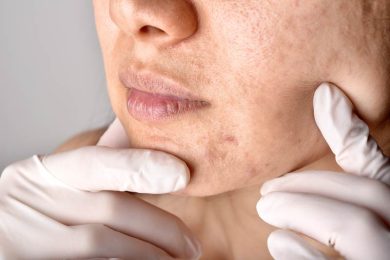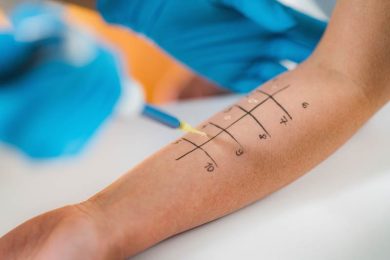What is Thyroid and Parathyroid Surgery?
The thyroid is a gland in the neck that produces hormones responsible for regulating the body’s metabolism. Too much or too little hormone can cause serious medical complications. The hormone levels are typically managed by a primary care physician or endocrinologist. The thyroid can also enlarge, develop nodules or cancerous lesions within it. In cases such as these, thyroid surgery may be an option for treatment.
Thyroid Gland Removal
Surgery may be necessary when thyroid cancer has been detected or suspected, or an otherwise benign thyroid nodule grows so large it causes problems with swallowing or breathing, and even in some cases where hyperthyroidism (a disorder in which excess thyroid hormone is produced) does not respond to treatment with medications or radioactive iodine.
Thyroid surgery is known as a thyroidectomy. Typical procedures performed include a total thyroidectomy to remove the entire gland or thyroid lobectomy to remove half of the gland.
After total thyroidectomy, lifetime thyroid hormone replacement will be necessary.
Effectiveness of Thyroid Surgery
The effectiveness of any surgical thyroid procedure depends on the type of cancer present and how much it has spread.
Overall, the surgery is considered safe, but may lead to complications that include injury to the vocal cords and larynx (which could cause hoarseness, changes in the voice, and problems speaking or swallowing), injury to the parathyroid glands (which could cause hypoparathyroidism, a separate condition in which too little parathyroid hormone is produced), difficulty breathing, and the usual risks associated with most surgical procedures (bleeding and infection).

Why is Thyroid and Parathyroid Surgery Performed?
The parathyroids are typically four glands near the thyroid gland that are critical for calcium metabolism. When the glands produce an over abundance of parathyroid hormone, the result is too much calcium, a condition known as hyperparathyroidism. This is often caused by an adenoma, a type of benign tumor. Minor cases may be dealt with medically, but parathyroid surgery is often recommended.
Whether to proceed with parathyroid surgery depends on a number of factors including how much calcium is in the blood and the extent of symptoms. Once the diagnosis is made, imaging tests will typically be performed to try to localize the source of the problem.
Surgery is typically performed under general anesthesia, and frequently, patients can go home the day of surgery.
All surgeries involve some degree of risk, such as bleeding, infection, and reactions to anesthesia. Parathyroid surgery could cause injury to the thyroid gland and vocal cords or cause breathing problems. In addition, you could be at risk for hypocalcemia, a condition in which calcium levels drop too low. Fortunately, this is easily treatable.
What is Ultrasound Guided FNA?
When nodules are found in the thyroid, your doctor must determine the cause in order to recommend the right treatment plan. Typically, an ultrasound is obtained first. Depending on the appearance of the nodules on the ultrasound, a biopsy may need to be performed.
Unlike traditional surgical biopsies, ultrasound-guided, fine needle aspiration (FNA) biopsies are less invasive and, frequently, can be performed in the office. The procedure uses sound waves to locate an abnormality within the thyroid and a hollow needle to remove a tissue sample for further examination under a microscope.
How is an Ultrasound Guided FNA Performed?
Your neck will be cleaned with an antiseptic and numbing medication may be used. A small amount of ultrasound gel is applied to the area; the gel allows sound waves to travel back and forth between the ultrasound transducer and the area under investigation.
The ultrasound is used to ensure accurate placement of the needle into the thyroid nodule. Once the location has been determined, a thin, fine gauge needle is inserted through the skin into the nodule. A sample of cells are extracted and put on a slide for a pathologist to review. If additional samples are required, new needles will be used.
Once the biopsy is complete, pressure is applied to decrease the risk of bleeding and a bandage is placed over the area if needed.
The procedure takes less than 30 minutes to complete.
How do I Prepare for an Ultrasound Guided FNA?
Your doctor will provide you with specific instructions before the procedure. Most medications can be continued, but you may be asked to temporarily stop taking anticoagulants, or blood thinners, as they can increase your risk of bleeding. Common blood thinning agents include aspirin, Lovenox®, Plavix®, and Coumadin®.
A non-toxic ultrasound gel will be applied to your neck during the procedure. Since the gel may get on your clothing or jewelry, it is recommended you wear comfortable clothing and remove your jewelry before the procedure.
Most patients can resume normal activities immediately following the procedure.
The site of the biopsy may be sore or tender for one to two days. Over-the-counter pain medication may be taken to relieve any discomfort.




















